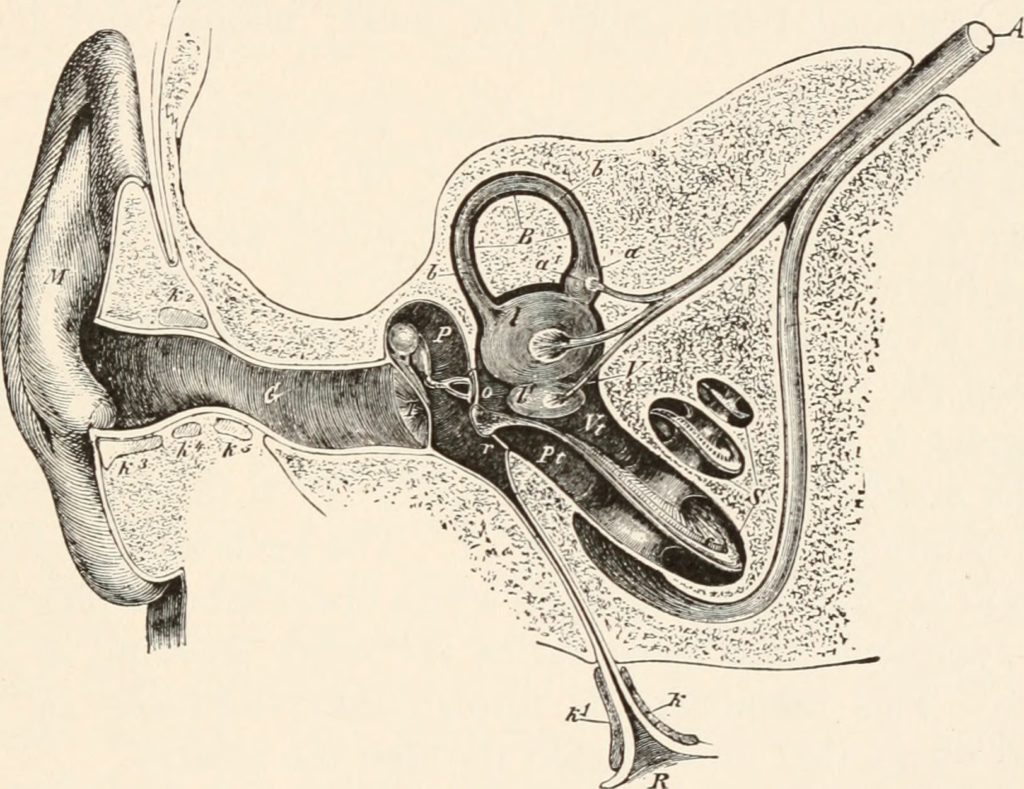
ARE YOU MISSING OUT ON THE PLEASURES OF SOUND & VIBRATION?
Who wouldn’t want to be a calm, attentive listener? Yet most of us humans struggle to really hear each other. We get easily distracted by our own thoughts or devices.
I’m sure you also notice people in daily life straining to hear each other, or tuning each other out while pretending to listen. Like parents lost in a cell phone while their kids are trying to connect with them. It’s not that difficult, with a small shift of your consciousness, to open up a whole new world: the pleasure of vibration, and sound (if you are a hearing person) resonating in spaces and between humans.
Active listening is a big topic for anyone truly interested in meaningful communication, and there are lots of courses and tips on how to do it right. I think that understanding how your sense of hearing functions, and simply enjoying it for itself, is a step that people are skipping over to quickly!
Cranial nerve 8, the subject of this weeks video and post, is one of my favorite. It carries impulses from the organs of hearing and balance to your brain. If you want to learn about balance, go to THIS POST. Today we will explore the cochlea, which processes sound waves. This is what it looks like (It’s the spirally part at the bottom of the whole organ):

Exploring how it works will help you learn to listen with more…
- Calm
- Comprehension
- Pleasure
This is a purely receptive, sensory nerve. There is no effort required to hear. There are some tiny muscles that move three tiny bones, but they are so small you can’t feel them! The simple pleasure of perceiving and enjoying sound itself is key to understanding people and being truly present with them.
THERE IS A DIFFERENCE BETWEEN HEARING (PERCEPTION) AND LISTENING (INTERPRETATION OF SOUND)
Here is how it works: The image above shows the ear canal, which leads to a very fine and sensitive membrane. This membrane vibrates when stimulated by an incoming sound wave.
That vibration is amplified as it sequences through those three delicate, interlocking bones, which carry the vibration to another sensitive membrane at the opening of the cochlea, the spirally chamber you see above which is filled with sensitive hair like cells that look like THIS. That’s just the hearing part though! Those hairs send electrical impulses to your brain, which goes to work interpreting the signals based on past experience.
“The ear hears, the brain listens, and the body senses vibrations. Listening depends on a lifetime of practice that depends on accumulated experiences with sound. Listening can be focused on detail, or open to the entire field of sound. It is a mysterious process that is not the same for everyone. To hear is the physical means that enables perception. To listen is to give attention to what is perceived both acoustically and psychologically. It is the interpretation of sound waves.”
Oliveros calls attention to the gap between the sound you hear, and the way you interpret that sound. What happens if you spend more time with the sound itself, and less time with judgement or interpretation? You could call it “listening with an open mind” – one which has room for new impressions, insights, qualities, and associations.
Here are some aspect of sound to practice with:
- Attend to all the sounds in your environment without focusing narrowly on one specific sound
- How near or far are the sounds? What do they tell you about the source of the sound, and it’s the resonance in space(s)?
- What is the unique quality of the different sounds that make up the whole of what you are hearing?
Practice listening in this way just for fun before you try to put it to the test in an actual conversation! It’s pretty trippy. If you do, let me know what you discover. This is just a glimpse of Cranial Nerve Sequencing, a healing and energizing process where we work our way through all 12 cranial nerves, one after the other. You can find out more about it HERE.
